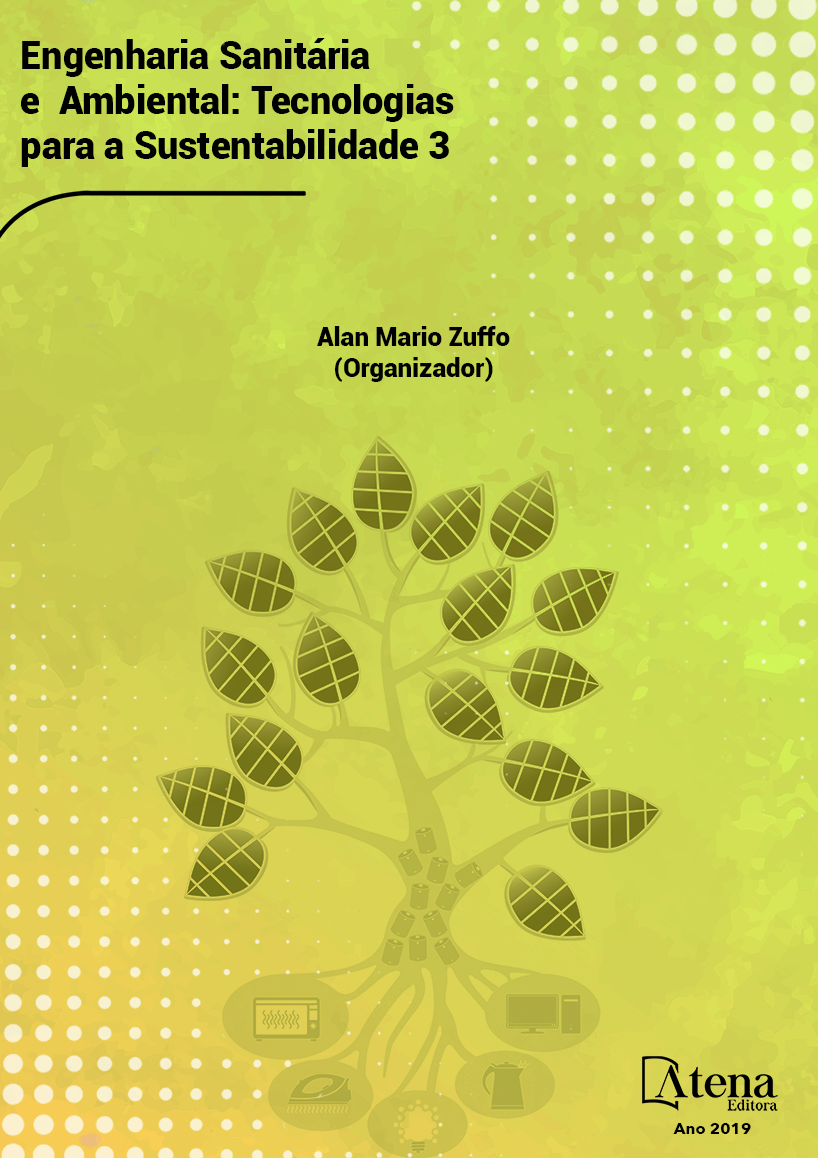
CARACTERIZAÇÃO FÍSICO-QUÍMICA DE EFLUENTES INDUSTRIAIS COM PÓS-TRATAMENTO ATRAVÉS DE PROCESSOS ELETROLÍTICOS: NATEX (XAPURI, ACRE)
As indústrias de beneficiamento
e produção de produtos originados do látex
nativo, como o preservativo, no contexto dos
desafios socioambientais da economia verde,
ainda encontram sérias dificuldades na gestão
ambiental dos efluentes gerados. O presente
trabalho tem por objetivo geral caracterizar
através de variáveis físico-químicas (Turbidez,
pH, Nitrato, Nitrito, cor verdadeira, DQO,
DBO, OD, OG, Sulfato, Sulfeto, Ferro total,
Cloro total, Sólidos Suspensos, dureza
total) e microbiológicas (Coliformes cotais
e termotolerantes) a eficiência do processo
de eletrofloculação através das células
eletrolíticas, comparando os efluentes bruto
(EB) e tratado (ET) oriundos da fábrica
NATEX com os efluentes tratados pela célula
eletrolítica gerando os efluentes bruto flotado
(EBF) e tratado flotado (ETF). O experimento
foi desenvolvido em escala de bancada com
tempo de detenção hidráulica (TDH), de 120
minutos. As análises observaram os padrões
do Standard methods for the examination of
water and wastewater, 20th ed. Os resultados
obtidos p apresentaram melhor eficiência para
as amostras ET- ETF nas variáveis: Ferro total
(92,69%), Cor Aparente (74,36%), Turbidez
(87,59%) as médias das amostras EB para
EBF após a eletrofloculação apresentaram
redução dos valores para as variáveis: Cloro
total (69,50%) e Turbidez (88,83%). A aplicação
da técnica de eletrofloculação resultou
em melhorias do tratamento dos efluentes
industriais, pois apresentou elevada capacidade
de remoção para as variáveis: DQO, sulfatos e
sulfetos. As amostras ET-ETF, após o tratamento
eletroquímico sugerem a eletrofloculação como
pós-tratamento ao sistema de tratamento de
efluentes industriais existentes.
CARACTERIZAÇÃO FÍSICO-QUÍMICA DE EFLUENTES INDUSTRIAIS COM PÓS-TRATAMENTO ATRAVÉS DE PROCESSOS ELETROLÍTICOS: NATEX (XAPURI, ACRE)
-
DOI: 10.22533/at.ed.5171911042
-
Palavras-chave: Efluentes Sanitários e Industriais, Eletroflotação, Eletrocoagulação, Processos Eletrolíticos, Biodiversidade
-
Keywords: Sanitary and Industrial Effluents, Electro-flotation, Electrocoagulation, Electrolytic Processes, Biodiversity.
-
Abstract:
The industries of beneficiation
and production of native latex products, such
as condoms, in the context of the socioenvironmental
challenges of the green economy,
still face serious difficulties in the environmental
management of the generated effluents. The aim of the present work is to characterize
by physical-chemical variables (Turbidity, pH, Nitrate, Nitrite, true color, COD, BOD,
OD, OG, Sulphate, Total Iron, Total Chlorine, Suspended Solids, total hardness) (EB)
and treated (ET) effluents from the NATEX plant with the effluents treated by the
electrolytic cell generating the float crude effluents (EBF) and float treated (ETF). The
experiment was developed on a 120 minute hydraulic holding time (TDH) bench scale.
The analyzes observed the standards of the Standard methods for the examination
of water and wastewater, 20th ed. The results obtained showed better efficiency for
the ET-ETF samples in the following variables: Total iron (92.69%), Apparent Color
(74.36%), Turbidity (87.59%) and EBF electroblotting showed values reduction for
the variables: Total chlorine (69.50%) and Turbidity (88.83%). The application of the
electroflocculation technique resulted in improvements in the treatment of industrial
effluents, since it presented high removal capacity for COD, sulfates and sulfides. The
ET-ETF samples, after the electrochemical treatment, suggest electroflocculation as a
post-treatment to the existing industrial effluent treatment system.
-
Número de páginas: 15
- Emerson Silva de Almeida
- Julio Cesar Pinho Mattos


